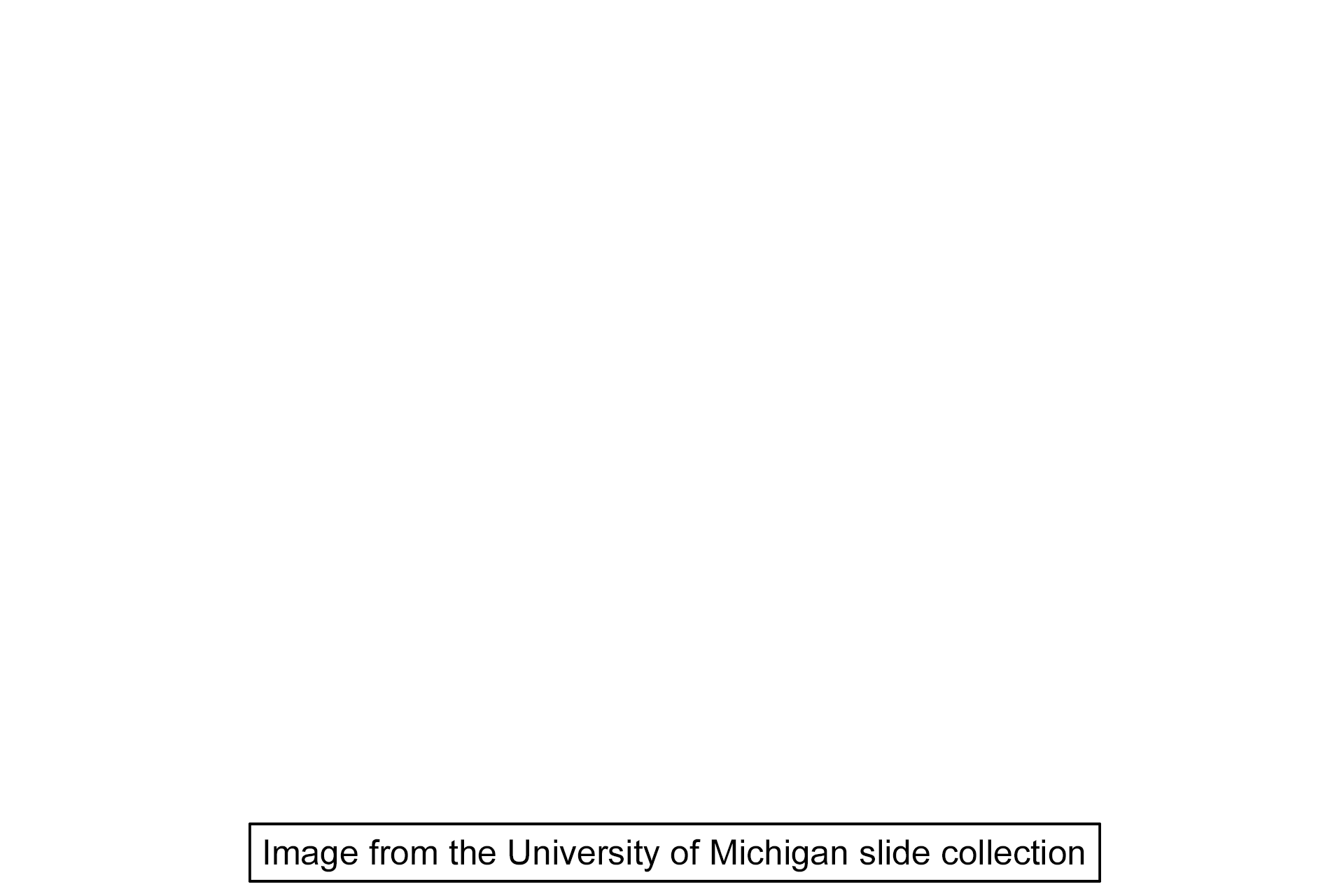
Bronchiole
Cartilage plates and mixed glands are not present in bronchioles. In large bronchioles, such as the one seen here, the epithelium remains pseudostratified columnar with cilia and goblet cells; the lamina propria contains a smooth muscle layer represented as bands spiraling around the bronchiole. Other changes occur as the passageway decreases in diameter. 100x

Bronchiole
Cartilage plates and mixed glands are not present in bronchioles. In large bronchioles, such as the one seen here, the epithelium remains pseudostratified columnar with cilia and goblet cells; the lamina propria contains a smooth muscle layer represented as bands spiraling around the bronchiole. Other changes occur as the passageway decreases in diameter. 100x

Epithelium
Cartilage plates and mixed glands are not present in bronchioles. In large bronchioles, such as the one seen here, the epithelium remains pseudostratified columnar with cilia and goblet cells; the lamina propria contains a smooth muscle layer represented as bands spiraling around the bronchiole. Other changes occur as the passageway decreases in diameter. 100x

- Cilia
Cartilage plates and mixed glands are not present in bronchioles. In large bronchioles, such as the one seen here, the epithelium remains pseudostratified columnar with cilia and goblet cells; the lamina propria contains a smooth muscle layer represented as bands spiraling around the bronchiole. Other changes occur as the passageway decreases in diameter. 100x

Lamina propria
Cartilage plates and mixed glands are not present in bronchioles. In large bronchioles, such as the one seen here, the epithelium remains pseudostratified columnar with cilia and goblet cells; the lamina propria contains a smooth muscle layer represented as bands spiraling around the bronchiole. Other changes occur as the passageway decreases in diameter. 100x

- Smooth muscle >
Bronchioles lack supporting cartilage plates and often appear in tissue sections with a highly folded mucosa which results from postmortem contraction of the smooth muscle.

Alveoli >
The bronchiole is surrounded by alveoli, indicating that it is an intrapulmonary structure. However, none of the alveoli communicate with the lumen of the bronchiole, indicating that these alveoli are not a component of the bronchiolar wall and that the bronchiole, therefore, cannot participate in gas exchange. A bronchiole is a component part of the conducting portion of the respiratory system.

Bronchial blood vessels >
Bronchial blood vessels lie within the wall of and supply the tissues of this bronchiole.

Image source >
Image taken of a slide in the University of Michigan collection.